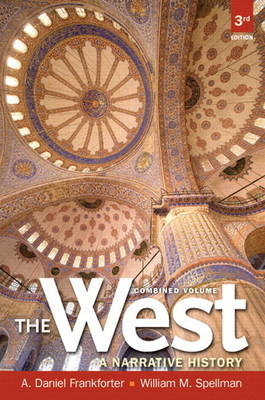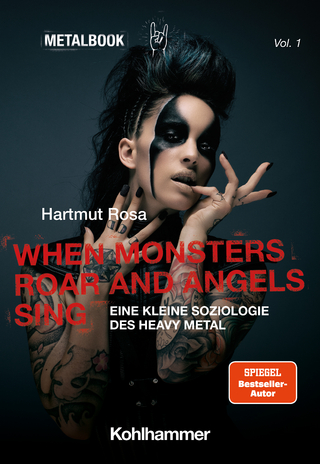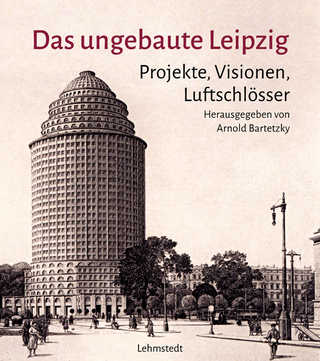
Black and White Edition of The West
Pearson (Verlag)
978-0-205-88791-0 (ISBN)
- Titel ist leider vergriffen;
keine Neuauflage - Artikel merken
The West: A Narrative History is a concise but not abridged introduction to the West, encompassing all cultures that trace their ancestry to the ancient Mediterranean world. It is not a reduced version of a larger study, but a full narrative of the West written concisely.
This learning program is built around a Key Question in every chapter, a feature that shows students why western civilization is relevant for them. Students will discover the key questions that define the past are in many ways the same key questions of today. Since students often see conflict between a Christian “West” and an Islamic “East” in today’s society, the authors highlight the ongoing role the Middle East has played in shaping the West. Students will understand the links between people of the West and those in other regions.
The West is an accessible program available in several formats to give instructors and students more choices and more ways to save. With the release of the 3rd edition, The West becomes an integrated program tied closely to the new MyHistoryLab.
A better teaching and learning experience
This program will provide a better teaching and learning experience—for you and your students. Here’s how:
Personalize Learning – The new MyHistoryLab delivers proven results in helping students succeed, provides engaging experiences that personalize learning, and comes from a trusted partner with educational expertise and a deep commitment to helping students and instructors achieve their goals.
Improve Critical Thinking – Each chapter opens with a Key Question and a brief Key Question essay. The Key Question is revisited at the end of the chapter, and MyHistoryLab Icons and Connections features ensure close integration with the new MyHistoryLab.
Engage Students – Maps, illustrations, and a biography feature promote discussion of the narrative.
Support Instructors - MyHistoryLab, Class Preparation Tool, Instructor’s Manual, MyTest, Annotated Instructor’s eText, and PowerPoints are available to be packaged with this text.
Note: MyHistoryLab does not come automatically packaged with this text.
A. Daniel Frankforter is Professor of History at the Pennsylvania State University, where he has taught for four decades. His undergraduate work was in the history of ideas and philosophy at Franklin and Marshall College. He earned a Master of Divinity degree from Drew University, did graduate work at Columbia University and the University of Göttingen, and completed master’s and doctoral degrees in medieval history and religious studies at Penn State. His research interests are in English ecclesiastical history, the evolving status of women in medieval Europe, and textual criticism. Articles on these topics have appeared in such journals as Manuscripta, Church History, The British Studies Monitor, The Catholic Historical Review, The American Benedictine Review, The International Journal of Women’s Studies, and The Journal of Women’s History. His books include A History of the Christian Movement: An Essay on the Development of Christian Institutions, Civilization and Survival, The Shakespeare Name Dictionary (with J. Madison Davis), The Medieval Millennium: An Introduction, The Western Heritage, brief edition (with Donald Kagan, Stephen Ozment, and Frank Turner), The Heritage of World Civilizations, brief third edition (with Albert Craig, William Graham, Donald Kagan, Stephen Ozment, and Frank Turner), an edition and translation of Poullain de la Barre’s De L’Égalité des deux Sexes, and Stones for Bread: A Critique of Contemporary Worship. His most recent work is: Word of God/Words of Men: The Use and Abuse of Scripture. Over the course of his career he has developed 15 courses dealing with aspects of the ancient and medieval periods of Western civilization, the Judeo-Christian tradition, and gender issues. His service in the classroom has been acknowledged by the Penn State Behrend Excellence in Teaching Award and the prestigious Amoco Foundation Award for Excellence in Teaching Performance. William M. Spellman is Professor of History at the University of North Carolina Asheville and Director of the Council of Public Liberal Arts Colleges, a constorium of twenty-six institutions in the United States and Canada. He is a graduate of Suffolk University, Boston, and holds a PhD from the Maxwell School of Citizenship and Public Affairs at Syracuse University. He is the author of John Locke and The Problem of Depravity (Oxford, 1988); The Latitudinarians and the Church of England (Georgia, 1993); John Locke (Macmillan, 1995): European Political Thought, 1600-1700 (Macmillan, 1997); Monarchies, 1000-2000 (Reaktion, 2000); The Global Community: Migration and the Making of the Modern World (Sutton, 2002): A Concise History of the World Since 1945 (Palgrave, 2006); Uncertain Identity: International Migration Since 1945 (Reaktion, 2008); and A Short History of Western Political Thought (Palgrave, 2011).
Found in this section:
1. Brief Table of Contents
2. Full Table of Contents
1. BRIEF TABLE OF CONTENTS
Introduction
Part I Departure Prehistory to 1000 B.C.E.
Chapter 1 The Birth of Civilization
Chapter 2 The Rise of Empires and the Beginning of the Iron Age
Part II The Classical Era 2000 B.C.E. to 30 C.E.
Chapter 3 Aegean Civilizations
Chapter 4 The Hellenic Era
Chapter 5 The Hellenistic Era and the Rise of Rome
Chapter 6 Rome’s Empire and the Unification of the Western World
Part III The Division of the West 300 to 1300
Chapter 7 The West’s Medieval Civilizations
Chapter 8 The Emergence of Europe
Chapter 9 Europe Turns Outward
Chapter 10 Europe’s High Middle Ages
Part IV Challenges, Conflicts, and Departures 1300 to 1700
Chapter 11 Challenges to the Medieval Order
Chapter 12 Renaissance and Exploration
Chapter 13 Reformation, Religious Wars, and National Conflicts
Part V The Revolutionary Impulse
Chapter 14 The Early Modern State
Chapter 15 New World Views: Europe’s Scientific Revolution
Chapter 16 The Age of Enlightenment: Rationalism and its Uses
Chapter 17 Rebellion and Revolution: American Independence and the French Revolution
Part VI Europe Triumphant 1815 to 1914
Chapter 18 Industry, Society, and Environment
Chapter 19 The Age of Ideology in Western Europe
Chapter 20 The Consolidation of Nation States
Chapter 21 Global Empire and European Culture
Part VII Europe in Crisis 1914 to 1945
Chapter 22 World War I: The End of Enlightenment
Chapter 23 The Troubled Interwar Years
Chapter 24 World War II: Europe in Eclipse
Part VIII The Postwar Western Community 1945 to 2008
Chapter 25 Decolonization and the Cold War
Chapter 26 Western Civilization and the Global Community
2. FULL TABLE OF CONTENTS
Introduction
Part I — Departure Prehistory to 1000 B.C.E.
Chapter 1: The Birth of Civilization
Key Question: How do environments shape human communities and human communities alter environments?
The Evolution of the Prehistoric Cultures
The Archaic States
The Origin of Civilization in Mesopotamia: Sumer
The Rise of Civilization in Egypt
Chapter 2: The Rise of Empires and the Beginning of the Iron Age
Key Question: Does civilization promote or intensify divisions among peoples?
The Transition States
Imperial Egypt: The New Kingdom
The Indo-Europeans and the Clash of Empires
The Bible and History
Part II — The Classical Era 2000 B.C.E. to 30 C.E.
Chapter 3: Aegean Civilizations
Key Question: When does civilization in the West become “Western” civilization?
Minoan Mentors
The Mycenaeans, Greece’s First Civilization
The Aegean Dark Age
The Hellenic Era
The Rise of the Mainland Powers
The Persian Wars: Crucible of a Civilization
Chapter 4: The Hellenic Era
Key Question: What did the Greeks contribute to the development of modern civilization?
Persian Wars as Catalyst
The Peloponnesian War
Intellectual and Artistic Life in the Polis
Chapter 5: The Hellenistic Era and the Rise of Rome
Key Question: What circumstances are likely to undermine governments by the people?
The Hellenistic Era
The Origin of Rome
The Roman Republic
Rome’s Civil War
Chapter 6: Rome’s Empire and the Unification of the Western World
Key Question: Do people prefer order to liberty?
The Augustan Era
Order and Continuity: The Dynastic Option
Order and Continuity: The Elective Option
Life in an Imperial Environment
The Decline of Rome
Part III — The Division of the West 300 to 1300
Chapter 7: The West’s Medieval Civilizations
Key Question: Should freedom of religion be limited?
The Christian Element
The German Element
The Byzantine Empire of Constantinople
Islam
Chapter 8: The Emergence of Europe
Key Question: How did Europe build on its legacies from the ancient world?
The Merovingian Kingdom: Europe’s Nucleus
The Franks’ Neighbors
The Carolingian Era
Retrenchment and Reorganization
The Culture of Europe’s Dark Age
Chapter 9: Europe Turns Outward
Key Question: Was conflict among the medieval civilizations inevitable?
Islam’s Crest and Byzantium’s Resurgence
The Reorganization of Feudal Europe
The Eleventh-Century Turning Point
Chapter 10: Europe’s High Middle Ages
Key Question: Why are some societies more open to change than others?
The Renaissance of the Twelfth Century
Universities and Scholasticism
Religious Revival and Diversity of Opinion
The Artistic Vision of the High Middle Ages
Government in the High Middle Ages
Part IV — Challenges, Conflicts, and Departures 1300 to 1700
Chapter 11: Challenges to the Medieval Order
Key Question: What did the crises of the late medieval era reveal about the strengths and weaknesses of Europe’s civilization?
Challenges from Nature
Turmoil in the Middle East
Spiritual Crises
Political Responses: The Burdens of War
Chapter 12: Renaissance and Exploration
Key Question: How should a society use its history?
The Context for the Renaissance
The Culture of the Renaissance
The Northern Renaissance
The Middle East: The Ottoman Empire
Europe and Atlantic Exploration
Chapter 13: Reformation, Religious Wars, and National Conflicts
Key Question: How do civilized societies justify war?
The Lutheran Reformation
The Swiss Reformation
The Catholic Reformation
The Habsburg-Valois Wars
England’s Ambivalent Reformation
Convergence of Foreign and Domestic Politics: England, Spain, and France
The Final Religious Upheaval
Part V The Revolutionary Impulse
Chapter 14: The Early Modern State
Key Question: How do political systems reflect the structure of social and economic life?
Society in Early Modern Europe
Forging Centralized States
Absolutism in France
Constitutionalism in England
Wars of Empire and Global Markets
Central and Eastern Europe
Europe’s Declining Powers
Chapter 15: New World Views: Europe’s Scientific Revolution
Key Question: How does the study of the natural world influence religious belief and the understanding of truth?
The Medieval World View
Anticipating the New Science
New Directions in Astronomy and Physics
New Approaches to Truth
Theory and Application
Politics as Science
Science as Religion
Superstition and Its Victims
Chapter 16: The Age of Enlightenment: Rationalism and its Uses
Key Question: How do people construct ideas of progress?
Critiquing the Traditional Way of Life
Formulas for Improving Material Conditions
Enlightened Despots
Critiquing the Enlightenment
The Arts in the Age of Reason
Chapter 17: Rebellion and Revolution: American Independence and the French Revolution
Key Question: Can political change occur without social and economic upheaval?
America Rejects Europe
Revolution in France
Napoleon Bonaparte and the Export of Revolution, 1799–1815
The French Revolution and the Americas
Part VI Europe Triumphant 1815 to 1914
Chapter 18: Industry, Society, and Environment
Key Question: How do technology and urbanization influences the relationship between humans and nature?
From Rural to Urban Lifestyles in Europe
Agriculture, Demographics, and Labor
Innovations in Production
The Social Consequences of Industrialization
Industry, the State, and Global Power
Chapter 19: The Age of Ideology in Western Europe
Key Question: What leads people to challenge conventional ideas and practices?
The Congress System and the Conservative Agenda
Ideological Ferment
The Revolutions of 1848
Britain and Reform
The Romantic Movement
Utilitarianism and Utopian Socialism
The Marxist Challenge
Chapter 20: The Consolidation of Nation States
Key Question: Is nationalism a constructive force in the modern age?
Italian Unification
The Creation of Modern Germany
Constitutional Change in France and Britain
The Waning of the Habsburg, Russian, and Ottoman Empires
The United States and Western Europe
Nationalism and Race
Chapter 21: Global Empire and European Culture
Key Question: How does the projection of power reflect wider cultural values?
The New Imperialism: Motives and Methods
The Scramble for Empire: Africa
The Scramble for Empire: South and East Asia
The Legacy of Empire
Imperialism, Intellectual Controversy, and European Culture
Transformation in the Arts
Part VII Europe in Crisis 1914 to 1945
Chapter 22: World War I: The End of Enlightenment
Key Question: Are nation states inherently adversarial?
The Alliance System
The Experience of Modern Warfare
The Eastern Front and Europe’s Empire
Naval War and American Entry
The Impact of Total War at Home
Bolshevik Revolution in Russia
Peace Settlement and European Consciousness
Chapter 23: The Troubled Interwar Years
Key Question: Can personal liberty be maintained under conditions of material hardship?
Postwar Problems in Western Europe
The Price of Victory
The Great Depression, 1929–1939
Coping with the Depression
Italy: The First Fascist State
Authoritarian Regimes in Spain and Eastern Europe
The Emergence of Nazi Germany
Imperial Japan
The Soviet Union under Stalin
Chapter 24: World War II: Europe in Eclipse
Key Question: Can the force of ideas sustain a civilization under attack?
The Process of Appeasement, 1933–1939
Nazism Triumphant, 1939–1941: Europe and North Africa
The German Empire
The Destruction of the Jews
The Home Front and the Role of Women
War in Asia and the Pacific
The Tide Turns, 1942–1945
Planning for the Postwar World
Part VIII The Postwar Western Community 1945 to 2008
Chapter 25: Decolonization and the Cold War
Key Question: How does ideology shape public policy?
The Eclipse of Postwar Optimism
The End of European Empire
Expanding the Cold War
The Cold War and Nuclear Threat
Cuban Missile Crisis
Divisions and Detente
Chapter 26: Western Civilization and the Global Community
Key Question: Has the West defined the process of globalization?
The End of Communism
United Europe?
Science, Technology and the Envirnoment
Women and the Struggle for Equality
Religious Divides and Ethnic Nationalism
The Postindustrial West
| Erscheint lt. Verlag | 12.2.2014 |
|---|---|
| Sprache | englisch |
| Maße | 155 x 230 mm |
| Gewicht | 1125 g |
| Themenwelt | Geisteswissenschaften ► Geschichte |
| ISBN-10 | 0-205-88791-0 / 0205887910 |
| ISBN-13 | 978-0-205-88791-0 / 9780205887910 |
| Zustand | Neuware |
| Haben Sie eine Frage zum Produkt? |
aus dem Bereich


